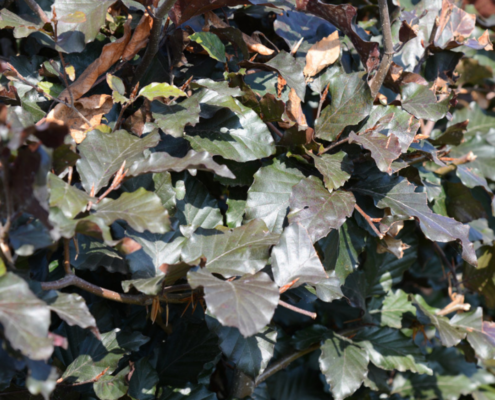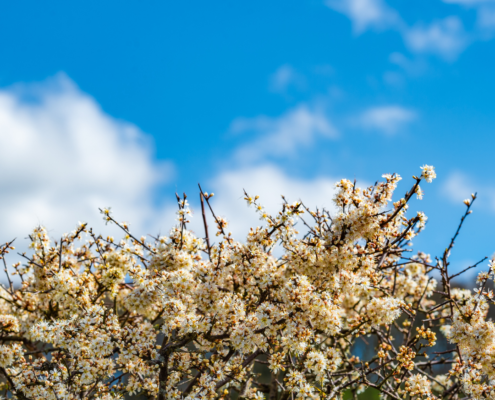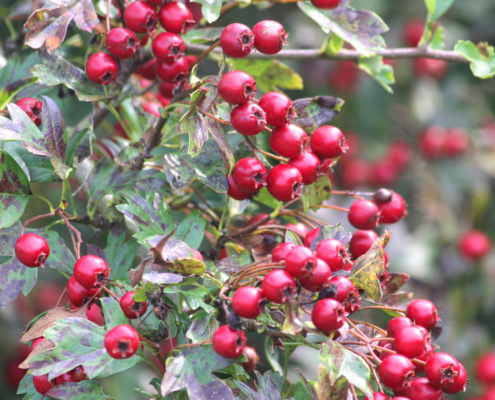Specify Native Hedging to support wildlife and biodiversity in your landscapes
Native hedging supports wildlife and biodiversity, it is not only attractive but also brings some BIG benefits to the birds, bugs and bees. We are always delighted to install native hedging for our customers.
What are the benefits of this simple landscaping solution?
- Biodiversity Support: Native hedgerows typically consist of a mix of native plant species that have evolved alongside local wildlife. This diversity provides a range of habitats and food sources for various insects, birds, and mammals. In contrast, non-native hedges may not offer the same level of support to local species. We really like this Native Hedge Mix from Arbour Landscape Solutions.
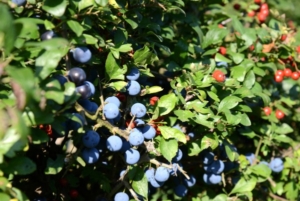
- Wildlife Corridors: Hedgerows can serve as wildlife corridors, allowing animals to move between different habitats. This is crucial for the survival of many species, particularly in fragmented landscapes where natural habitats are increasingly isolated. Urban landscapes really provide a challenge for our wildlife and biodiversity, which is why in the city landscapes we manage we endeavour to incorporate native hedging and other biodiversity boosting solutions.
- Food and Shelter: Native hedgerows provide a variety of berries, seeds, and insects that serve as food for birds, small mammals, and insects. The structure of the hedge, with its dense growth and varying heights, also offers shelter and nesting sites for birds and other wildlife.
- Seasonal Variation: Native hedgerows often exhibit a seasonal variation in terms of flowering and fruiting. This ensures a year-round availability of resources for wildlife. Different species may rely on different parts of the hedge at various times of the year. Hawthorn is a perfect example, providing pollen rich flowers during the spring and nutrient rich berries in the winter.
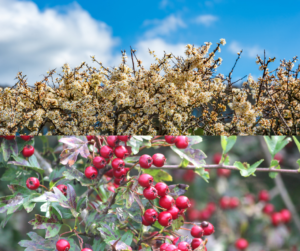
4. Adaptation to Local Conditions: Native plants are adapted to local climatic and soil conditions, making them more resilient and sustainable. They are likely to require less maintenance and are better equipped to withstand diseases and pests, reducing the need for chemical interventions that can negatively impact wildlife.
5. Conservation of Native Species: Planting native hedgerows contributes to the conservation of native plant species, some of which may be threatened or declining. By maintaining and restoring native habitats, there is a better chance of preserving the entire ecosystem.
6. Aesthetic and Recreational Value: Native hedgerows can enhance the visual appeal of the landscape and provide recreational opportunities for people. This can create a positive relationship between humans and nature, fostering a sense of stewardship for the environment.
7. Climate Change Resilience: Native plants are often better adapted to local climate conditions, and their use in hedgerows can contribute to the resilience of ecosystems in the face of climate change. This can be important for maintaining stable habitats for wildlife.
In summary, native hedging in the UK supports local biodiversity, creates wildlife corridors, provides food and shelter, adapts to local conditions, contributes to the conservation of native species, and offers aesthetic and recreational benefits. This makes it a preferred choice for those looking to enhance ecological diversity and promote a healthy environment at their sites. It makes a GREAT addition to meeting biodiversity net gain targets for landscape managers and property managers.

